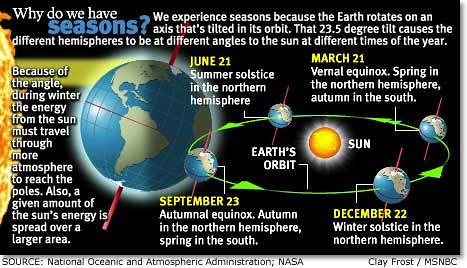
One of Greer's overarching themes for the past year has been that technological and scientific progress has become a secular religion and that the failure of actual technological progress to live up to expectations is causing people to lose faith. He called that faith Technological Superstitions and told people they should give A Pink Slip for the Progress Fairy.* In particular, he thinks that science as currently practiced is a doomed cultural project, a thesis he stated explicitly in The Suicide of Science and elaborated upon in Dark Age America: The Sharp Edge of the Shell. He had pointed things to say about the future of science in both. In "The Suicide of Science," he made the following forecast:
What Oswald Spengler called the Second Religiosity, the resurgence of religion in the declining years of a culture, could have taken many forms in the historical trajectory of industrial society; at this point I think it's all too likely to contain a very large dollop of hostility toward science and complex technology.He expanded on the form that rejection would take in "Dark Age America: The Sharp Edge of the Shell."
Modern science is extremely vulnerable to such a turn of events. There was a time when the benefits of scientific research and technological development routinely reached the poor as well as the privileged, but that time has long since passed; these days, the benefits of research and development move up the social ladder, while the costs and negative consequences move down. Nearly all the jobs eliminated by automation, globalization, and the computer revolution, for example, used to hire from the bottom end of the job market. In the same way, changes in US health care in recent decades have benefited the privileged while subjecting most others to substandard care at prices so high that medical bills are the leading cause of bankruptcy in the US today."A wall made of failed schools, defunded libraries, denied opportunities, and the systematic use of science and technology to benefit other people at their expense"--those look like things I've been worried about since the very beginning of this blog. At least Greer and I agree on a common set of perils to civilization.
It’s all very well for the promoters of progress to gabble on about science as the key to humanity’s destiny; the poor know that the destiny thus marketed isn’t for them. To the poor, progress means fewer jobs with lower pay and worse conditions, more surveillance and impersonal violence carried out by governments that show less and less interest in paying even lip service to the concept of civil rights, a rising tide of illnesses caused by environmental degradation and industrial effluents, and glimpses from afar of an endless stream of lavishly advertised tech-derived trinkets, perks and privileges that they will never have. Between the poor and any appreciation for modern science stands a wall made of failed schools, defunded libraries, denied opportunities, and the systematic use of science and technology to benefit other people at their expense. Such a wall, it probably bears noting, makes a good surface against which to sharpen oyster shells.
That written, it turns out that the year coming to a close was a good year for Greer to pick the topic of loss of faith in science. While it had its scientific triumphs, it also had its very public failures, such as the two I described in A bad week for private space. USA Today, as seen in the Guam Pacific Daily News went so far as to declare Science took a step back in 2014.
In 2012, scientists finally cornered the elusive Higgs particle, essential to explaining the most fundamental forces of nature. In 2013, we learned the Voyager spacecraft had reached the space between stars. As for 2014 - well, some years are best forgotten.Even the technologically boosterish Wired acknowledged the public embarassments in The Best and Worst in a Tumultuous Year for Science.
The year now winding down has seen its share of trailblazing scientific developments. But it has also had more than its fair share of disappointments and goofs, led by the retraction of two ballyhooed stem-cell papers from the top journal Nature and backtracking on a spectacular astrophysics finding announced at a press conference in March.
It’s been a roller-coaster year for science. It started with what looked like a remarkable breakthrough in stem cell science, which was soon followed by a stunning announcement by cosmologists: the first detection of gravitational waves, direct evidence for a popular theory of how the universe began. But as the year draws to a close, the first of these discoveries has been thoroughly discredited, and the second appears to be on the ropes.I'll get to science's successes in a later entry. For now, follow over the jump for more examples of the past year's goofs, failures, and downright frauds in science.
That’s not to say it was all bad. In October, scientists landed a spacecraft on a comet for the first time ever. And the year saw other interesting breakthroughs in everything from synthetic biology to anthropology. Here are our picks for the best and worst of science in 2014. If nothing else, they remind us that while science often moves in fits and starts, and sometimes stumbles, it keeps pushing forward.





























